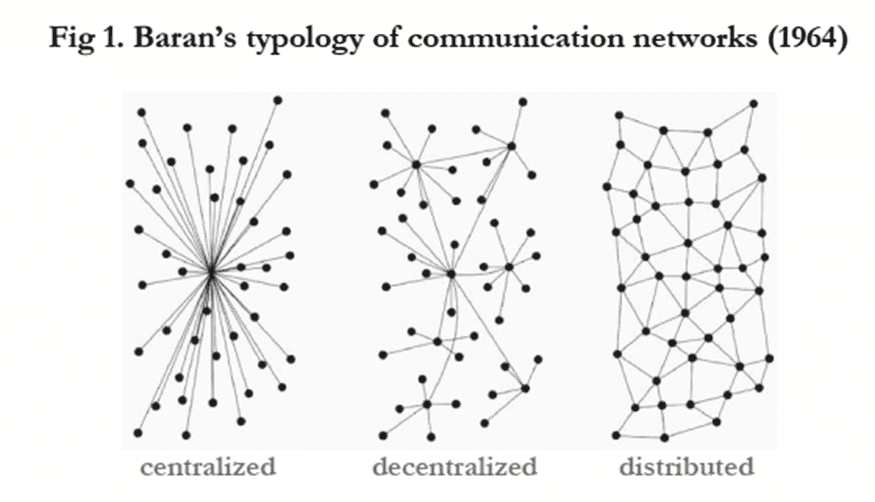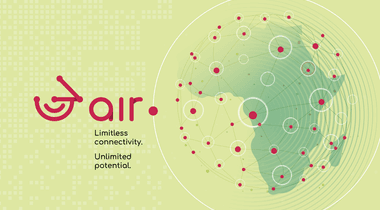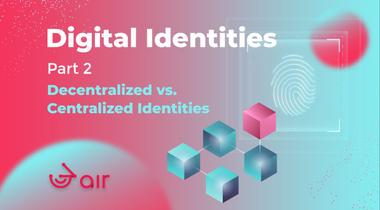Table Of Contents
There is a lot of talk about decentralization in the blockchain and crypto space, but what is it actually and why does it matter?
Let’s quickly look at the word decentralization as it is defined as: “The transfer of control of an activity or organization to several local offices or authorities rather than one single one.”
OK, but what does decentralization actually mean in the real world? Why is it so important?
The answer lies in trust. In the blockchain space we like to talk about trustless system meaning that trust is integrated into the code. And that code runs on a computer, or in a decentralized system, meaning on many computers. This shifts the control of decision-making from one centralized authority to a distributed network. This effectively limits the ability to exert authority or control over a system and also prevents the single point of failure.
In a trustless environment no one has to know or trust anyone else. Each member of the network has a copy of the same data, the distributed ledger and if it gets corrupted it will be rejected by the majority of the network members.
But a decentralized network also has other benefits such as:
Improved data reconciliation as data is stored in multiple copies on many computers.
Reduced point of weakness as there is no one actor that can manipulate or disable the service.
Optimized resource distribution as it can provide better performance and consistency.
There are tradeoffs that come with decentralization. There is always a battle between security and performance. The more a blockchain scales up, the more secure it usually becomes but performance may suffer. Also, decentralized networks are harder to maintain and more expensive to run.
This then also begs the question what services should run on a decentralized system, and which should not. There are thousands of computers (nodes) running in a decentralized system to validate a transaction. This could be done by one single computer in a centralized system. Additionally, these nodes need to come to a consensus on the validity of the transaction and that takes time. So, these are the constant tradeoffs between the benefits of trustless systems and costs associated with them. Some systems are suited for it and others are better run on a central server.
A decentralized network
A network is made of nodes and edges or interconnections between members of the network. According to the number of edges, we can define 3 types of networks: centralized, decentralized and distributed. In a distributed network, every node has about the same number of edges and there are more than one routes that nodes can use to connect to each other. This means that nodes are not in central or privileged positions. In such a system, even if a few nodes fail, the network will still stay connected and functioning.

At the top level we usually measure the decentralization of the network by just stating the number of nodes. Unfortunately, this is not enough. Imagine having 1000 nodes constituting a network. This would mean a fairly distributed or decentralized network. But what if all those computers would be set up in one warehouse? Imagine there is a fire or a power outage. The network would immediately shut down. One of the measures of decentralization is geographical diversity, this means that nodes need to be distributed at different location around the world to be fully decentralized.
We have seen this with Bitcoin where the hashing power fall by 50% when China banned Bitcoin mining last year.
The other measure of decentralization is censorship resistance. Imagine having 1000 nodes in a network distributed around the world. But these nodes would be run by one company, like it is usual today using cloud service for running blockchain nodes. Such a company could choose to shut down operations to those nodes at any point in time or it could choose to manipulate data. This is again something that decentralized system should prevent.
Other factors worth considering
In blockchain, sometimes just having a decentralized network of nodes is not enough. Many times, cryptocurrencies are part of networks and there is a tendency in adding governance functions to them. It is also a norm that new blockchain are using a consensus mechanism based on so called Proof Of Stake (PoS). In such systems it is very important that also the token is distributed. Centralization of governance tokens or PoS token leads to decreased censorship resistance and can reduce the resistance to bad actors.
Keeping network decentralized
This is another important point. Decentralization is not a static phenomenon and it exist on a scale. All decentralized system tends to centralize as this gives certain actors power and reduces cost. If we look at Bitcoin and Proof of Work (PoW), the centralization happens around areas of low-cost electricity and favorable climate conditions. This is a real problem, and it was shown in the China example.
In PoS systems, staking with a validator usually gives you rewards in the form of more of the same token that you stake. As only the minority of token holders are usually also stakers, with time they accumulate additional power in the form of native tokens.
Another centralization factor comes with increasing performance of the network. The blockchain trilemma states that you will always need to choose between security, scalability and decentralization. The more scalable you want to make the network the more resources it will need. This means that the majority of the fastest chains today can not be run on a home computer but needs specialized servers with enormous storage capacities and processing power. This centralizes the network in the hands of the ones that can afford and know how to operate such machines.
We will state it again: All decentralized systems have the tendency toward centralization and there must be measures in place that prevent that so that the system can run in a trustless environment, and we can use it in a secure and efficient manner without having to know who is on the other side of the transaction.
Now that you know what decentralization of a network actually means, you know why it is important to select a chain that is decentralized, but that it will also mean a tradeoff in terms of scalability. After EVM this is another very important factor we are taking into account selecting our chain of choice.









